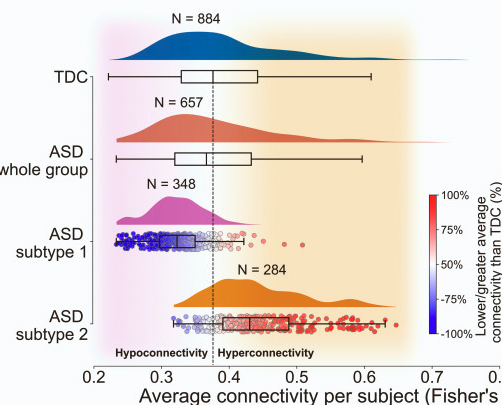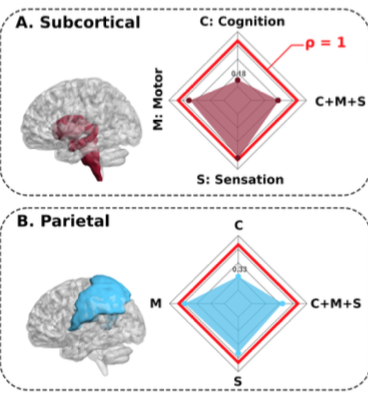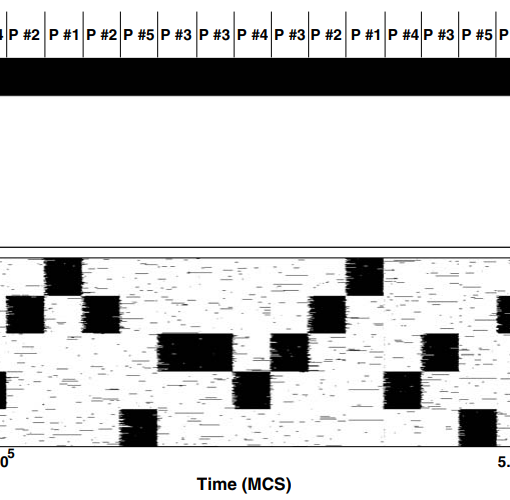Javier Rasero, Antonio Jimenez-Marin, Ibai Diez, Roberto Toro, Mazahir T Hasan, Jesus M Cortes. The neurogenetics of functional connectivity alterations in Autism: Insights from subtyping in 657 patients. Biol Psychiatry 2023, S0006-3223(23)01230-1. [pdf]
Abstract: Background: There is little consensus and controversial evidence on anatomical alterations in the brain of patients with autism spectrum disorder (ASD), due in part to the large heterogeneity present in ASD, which in turn is a major drawback for developing therapies. One strategy to characterize this heterogeneity in ASD is to cluster large-scale functional brain connectivity profiles.
Methods: A subtyping approach based on consensus clustering of functional brain connectivity patterns was applied to a population of N=657 autistic patients with quality-assured neuroimaging data. We then used high-resolution gene transcriptomic data to characterize the molecular mechanism behind each subtype by performing enrichment analysis of the set of genes showing a high spatial similarity with the profiles of functional connectivity alterations between each subtype and the group of typically developing controls (TDC).
Results: Two major stable subtypes were found: Subtype 1 exhibited hypo-connectivity (less average connectivity than TDC) and subtype 2, hyper-connectivity. The two subtypes did not differ in structural imaging metrics in any of the analyzed regions (64 cortical and 14 subcortical), nor in any of the behavioral scores (including Intelligence Quotient, ADI and ADOS). Finally, only subtype 2, comprising about 42% of all patients, led to significant enrichments after multiple testing corrections. Notably, the dominant enrichment corresponded to excitation-inhibition (E/I) imbalance, a leading well-known primary mechanism in the pathophysiology of ASD.
Conclusions: Our results support a link between E/I imbalance and functional connectivity alterations, but only in one ASD subtype, overall characterized by brain hyper-connectivity and major alterations in somatomotor and default mode networks.





